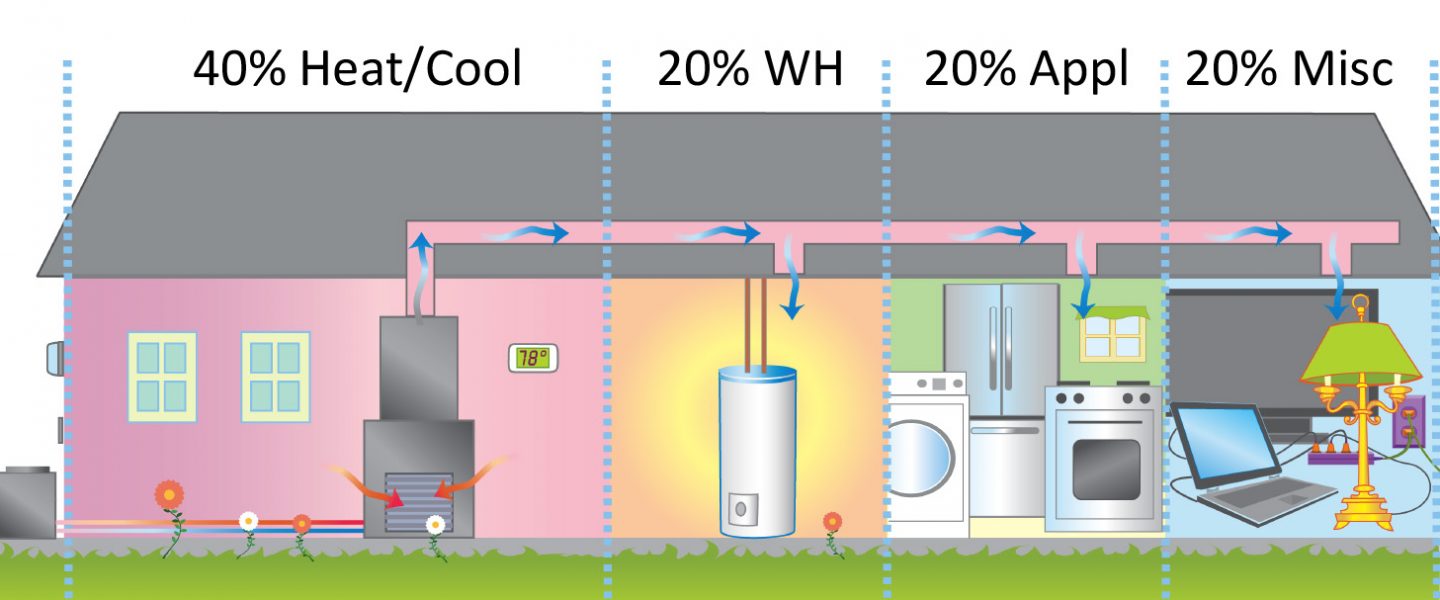
Heating and cooling typically make up approximately 40% of annual energy use, most of that is for cooling in Florida. Cooling energy use is driven by heat gain from different sources.
The pie chart below shows the heat gain sources that make up the cooling load in a typical Florida homes. Your home will likely have a slightly different distribution of energy use, but this pie chart is a good “rule-of-thumb” for cooling load sources in Florida homes.
What Makes the Electric Meter Spin at Your Home?

A simplified utility bill analysis can help you determine how much of your energy use is for heating and cooling and how much is for your base load. This can help you decide which improvements to consider. For example, if you discover that your annual cooling use is only 20% of your total annual cost, it probably makes more sense to reduce energy use in your base energy use – water heating, major appliances, lighting, fans, and plug loads such as electronics and computers.
Steps to Determine Your Energy Use
- Gather 12 months of electric bills (and gas if you have gas heating/water heating)
- Find the lowest month energy use (or cost). Take this as an estimate of your Base Energy Use. Although there may be some heating and cooling Energy use that month, the vast majority of it is for water heating, major appliances, lighting, fans, and plug loads.
- Subtract Base Energy Use from each of the other months. Consider this as an estimate of the HVAC energy use for each month.
- Add up the HVAC energy use for the “summer” months to estimate your cooling energy use.
- Repeat for the “winter” months to estimate your heating energy use.
Analysis
If your combined annual cooling and heating energy use is about or more than 40% of your annual total, work on reducing cooling energy use. Focus on reducing heat gain through the building envelope, improving HVAC system performance and selecting higher efficiency HVAC equipment at the time of replacement.
If your cooling energy use is significantly less than 40% of your total annual energy use, concentrate on reducing the base load starting with a lighting retrofit. Focus on reducing hot water use, installing high efficiency lighting, and making informed choices when it’s time to replace major appliances, electronics, and fans.
Priorities
Lessons learned from FSEC field research are provided below, followed by links to helpful resources.
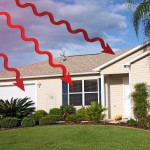 Building Envelope
Building Envelope
The sun’s heat enters homes through the windows, roof, walls, and infiltration of hot outside air. Together, these typically make up over 50% of the annual cooling load, as shown on the pie chart above. Adding ceiling insulation (up to R-30 or 38 total), installing low-e window film or replacement windows, and selecting light or white colors for exterior paint and roofing are the most common improvements to reduce cooling energy use. Ideally, window films should have a solar heat gain coefficient (SHGC) less than 0.5 – the lower the better. Select a film that has visible transmittance equal to or greater than SHGC. At replacement, select ENERGY STAR® windows for your climate. When it’s time to replace your roofing, select the lightest color option available whether selecting metal, tile, or shingle roofing. The same goes for exterior wall finishes.
If you live in North Florida, select improvements that reduce both heat gain and heat loss such as enhanced ceiling insulation. Improvements that only reduce heat gain, such as reflective metal roofing, will actually increase your heating energy use. In Central Florida, this is not as important. In South Florida, it does not apply – always choose the option that minimizes heat gain.
 Internally Generated Heat
Internally Generated Heat
As shown on the cooling load pie chart, about 16% of annual heat gain is generated by refrigerators, computers, other appliances, processes (such as cooking and bathing), and people. Higher efficiency office equipment and appliances produce less heat – a small bonus on top of reduced energy use.
 Duct System
Duct System
The duct system absorbs heat from surrounding attic spaces, accounting for about 12% of the annual cooling load. That’s twice as much as the heat gained through the walls. The high temperature difference between the super cool air inside the duct and the surrounding attic air leads to higher heat exchange rate than that of the exterior walls. Additionally, hot attic air pulled into the duct system through small holes, called “duct leakage” accounts for another 10%. Duct leakage repair is one of the most cost-effective improvements available and also improves indoor air quality. Many utilities offer incentives for duct repair and assistance finding a trained professional.
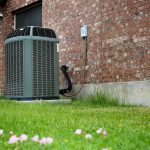
HVAC Equipment Efficiency
In addition to heat gain, the efficiency of the HVAC equipment heavily influences cooling energy use. Improve the efficiency of the HVAC system you have by getting it serviced to ensure the refrigerant charge is adequate. The cooling coils in both the indoor and outdoor units can be cleaned to improve system efficiency. Consider replacing air conditioning equipment more than 10 years old.
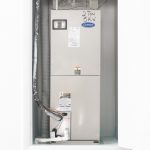
HVAC Replacement
When it’s time to replace the system, even those with the minimum efficiency rating, the seasonal energy efficiency ratio (SEER), available today are likely to be produce appreciable savings. Higher SEER ratings will produce greater savings; however, air conditioning size or capacity matters too. Capacity is measured in tons or BTUs of cooling. Bigger is not necessarily better when it comes to cooling. Oversized systems quickly meet the thermostat set point, but they often don’t run long enough to wring moisture out of the air resulting in a cool, clammy environment. At replacement, ask your contractor to do a sizing calculation for your home and resist the urge to add a half ton. Instead, consider a two-stage system. Two-stage systems will run at low capacity most of the time, but have the ability to provide more cooling for those times that the house is full of people.
In Central and North Florida, select a heat pump. In South Florida, the heating season is so limited that a straight air conditioner with electric resistance heating—though much less efficient than a heat pump—does not create a significant difference in annual HVAC energy use.
Reducing Base Load Energy Use
The 60% of the annual energy use not related to the HVAC system is referred to as the base load. In contrast to HVAC energy use, the base load isn’t heavily influenced by the weather or seasonal changes. It’s divided roughly evenly between water heating, major appliances, and lighting/plug-in devices.
Water Heating
For water heating energy savings, first repair leaks and dripping faucets, then consider reducing hot water usage with low flow shower heads and hot water pipe insulation. Research your water heater options before you need to buy one. Replacing an older electric water heater (efficiency factor 0.88 to 0.90) with a standard tank type electric unit (EF 0.9 to 0.95) or a standard tank type gas water heater (EF 0.62-0.65) won’t produce any appreciable savings. Space permitting, an ENERGY STAR®-labeled heat pump electric water heater (EF > 2.0 – twice as efficient!) or an ENERGY STAR® tankless gas water heater will (EF >0.9 – similar to standard electric tanks) will produce savings compared to standard tank type units of the same fuel.
A caution on ENERGY STAR® water heaters: Some water heater options have requirements on clearances, location, and operating environment. For example, tankless gas water heaters are always installed on the outside of an exterior wall, and “hybrid” heat pump water heaters have a minimum room size requirement and need larger-than-usual clearances. Consult a plumber while you are considering options to determine which types can be installed at your house and the maintenance associated with types you are unfamiliar with.
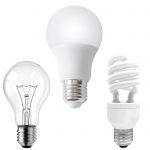 Lighting
Lighting
Replace incandescent and compact fluorescent bulbs (CFL) as they burn out, or if desired, change everything over to LED at once. Before buying in bulk, consider color and distribution pattern of the light, which vary widely among LED bulbs.
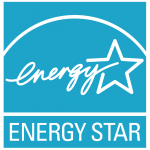 Appliances and Plug Loads
Appliances and Plug Loads
When replacing appliances, electronics, office equipment, lighting, ceiling fans, and ventilation fans, look for the ENERGY STAR® label. It means that the manufacturer has met higher standards for efficiency and often performance. Visit the ENERGY STAR® products website (https://www.energystar.gov/products?s=mega) to access a wealth of information for each of these product categories including buying guidance, product and rebate relocates, and the specifications required to earn the label.
Lessons Learned from FSEC’s Phased Deep Retrofit Monitored Field Project
Low-Cost Measures
Collectively, this package of low-cost or “shallow” retrofit measures can often save 1,360 kWh or $150 per year.
 Change all lighting to high efficiency LED and CFL lighting
Change all lighting to high efficiency LED and CFL lighting
Replacing all of the incandescent lighting saves $80 a year directly, reduces interior heat, and cuts air conditioning run time.
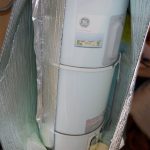 Add external hot water tank wrap
Add external hot water tank wrap
Use double foil insulation wrap.
 Change to low-flow showerheads
Change to low-flow showerheads
Not all water-efficient showerheads are the annoying flow restriction type. Choose from a variety of fixtures based on high ratings in Consumer Reports.
- Note: Adding a tank wrap and changing to lower flow showerheads can save up to $40 per year.
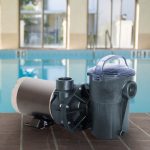 Cut back on pool pump runtime if greater than six hours per day
Cut back on pool pump runtime if greater than six hours per day
Running your pool pump two hours less per day is $80 lower for the year. Measures that affect pool pumping energy have a very large impact since measured pool pump energy averages nearly 4,000 kWh per year, and a third of Florida homes have swimming pools. Often there is push back from pool maintenance services, though, so a variable speed pool pump is a better solution.
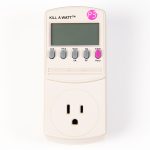 Measure refrigerator and freezer energy using Kill-a-Watt meter (plug frig in for a day)
Measure refrigerator and freezer energy using Kill-a-Watt meter (plug frig in for a day)
Old appliances can use substantially more energy than newer, more efficient units. Find out how much your appliance is consuming by plugging it into a Kill-a-Watt meter for a day. If energy use is greater than 3.5 kWh per day, purchase a new, more efficient unit. Standard new refrigerator or freezers use only about 2 kWh per day.
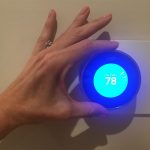 Install smart or connected thermostats such as Nest or Ecobee
Install smart or connected thermostats such as Nest or Ecobee
Newer “smart” thermostats use a combination of data on occupancy, weather, and thermostat-setting preference to help consumers with automated setback/setup schedules. Space cooling and heating reduced by about 9%, saving 540 kWh/yr or $60/yr. Savings is much larger if occupant is seasonal or the house is unoccupied in the daytime.
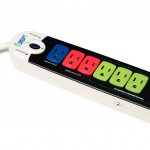 Install smart power strips to reduce power from devices plugged in but not doing anything
Install smart power strips to reduce power from devices plugged in but not doing anything
Home devices such as computers, printers, and gaming centers continue to consume power in low power modes when they are not being used. An Advanced Power Strip (APS) can provide energy use savings by turning these devices off automatically when they are not being used. The smart strip’s master outlet will turn off devices plugged into the slave outlets when the master device is turned off. Savings can be highly variable depending on the load and how long it is shed daily. FSEC research showed that APS saved between 0.2 and 0.7 kWh per day.
Advanced Retrofit Measures
Combined with the shallow retrofit package above, FSEC researchers found the following advanced or “deep” retrofit package to reduce total annual electricity consumption by 38% for an average of 7,070 kWh, worth about $780/year
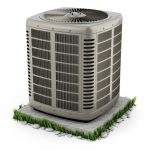
Install very high efficiency air conditioners and heat pumps
(SEER 17 or greater)
If your air conditioning system is older than 10 years old, replace it with a high efficiency one. Remember to test and the seal duct system at the same time the unit is replaced. A high efficiency unit and save 50% of space cooling and heating 3,000 kWh/yr ($330/yr).
OR:
 Use supplemental ductless mini-split heat pumps to lower central AC load
Use supplemental ductless mini-split heat pumps to lower central AC load
Ductless mini-split heat pumps used as supplemental systems reduce energy consumption by about 40% for heating and cooling or 2,400 kWh/yr ($260). Mini-splits are ductless and can be installed in different zones, and they are an option to replacing a central AC unit. If a 110 Volt mini-split system is installed, it can be easily operated off a generator when the electric grid is down, as they typically draw less than 500 Watts.
Install heat pump water heaters (HPWH)
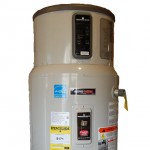 Replace your electric resistance water heater with a heat pump water heater. This saves 68% of water heating energy or 1,400 kWh/yr ($155/yr). Choose an 80 gallon size if three or more people are in the household.
Replace your electric resistance water heater with a heat pump water heater. This saves 68% of water heating energy or 1,400 kWh/yr ($155/yr). Choose an 80 gallon size if three or more people are in the household.
 Use heat pump clothes dryer (HPCD) with high efficiency washer
Use heat pump clothes dryer (HPCD) with high efficiency washer
A heat pump clothes dryer (HPCD) with a high efficiency washer (designed to remove more moisture than typical models), saves 35% of clothes dryer energy (250 kWh/yr) or $30/yr. This is a cost-effective option when chosen at the time of replacement.
 Replace refrigerators using more than 3 kWh/day with high efficiency one
Replace refrigerators using more than 3 kWh/day with high efficiency one
If your refrigerator consumes more than 3 kWh per day, replace it with a high efficiency one and save about 470 kWh/yr, depending on consumption of the existing unit. This results in a savings of about $50/yr.
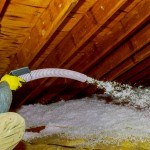 Add more ceiling insulation
Add more ceiling insulation
Insulating the attic to R38 from R11 or R19 reduces heating and cooling by about 10% or 600 kWh/yr ($65/yr).
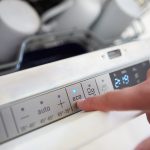 Install high efficiency ENERGY STAR® dishwasher at replacement time
Install high efficiency ENERGY STAR® dishwasher at replacement time
Replacing the dishwasher when it is worn out saves 100 kWh/yr ($11).
 Reduce pool pump runtime or install a variable speed pool pump [Special High Priority Retrofit]
Reduce pool pump runtime or install a variable speed pool pump [Special High Priority Retrofit]
A third of Florida homes have pool pumps, which is the second largest electricity end use in the Florida homes that have them, consuming 3,600 – 4,500 kWh per year. If you have a pool, save 65%-85% of pool pumping electricity by using a variable speed pool pump, which saves 2,500 kWh or $275 per year.
Suggested Publications
- Phased Deep Retrofit Project: Real-Time Measurement of Energy End-Uses and Retrofit Opportunities
- Measured Retrofit Savings from Efficient Lighting and Smart Power Strips
- Measured Performance of Heat Pump Clothes Dryers
- Comparative Evaluation of the Impact of Roofing Systems on Residential Cooling Energy Demand in Florida
- Measured Impacts of Proper Air Conditioning Sizing in Four Florida Case Study Homes
- Cooling Load Reduction and Air Conditioner Design in a 19th Century Florida House Museum
[Last updated: 04 April 2022]